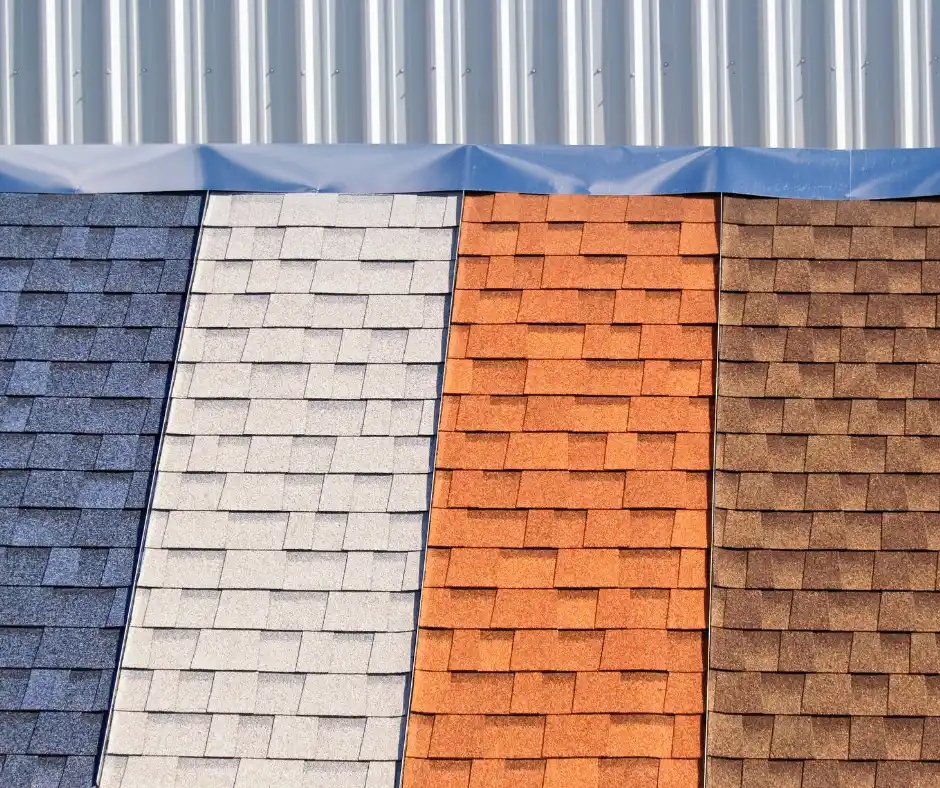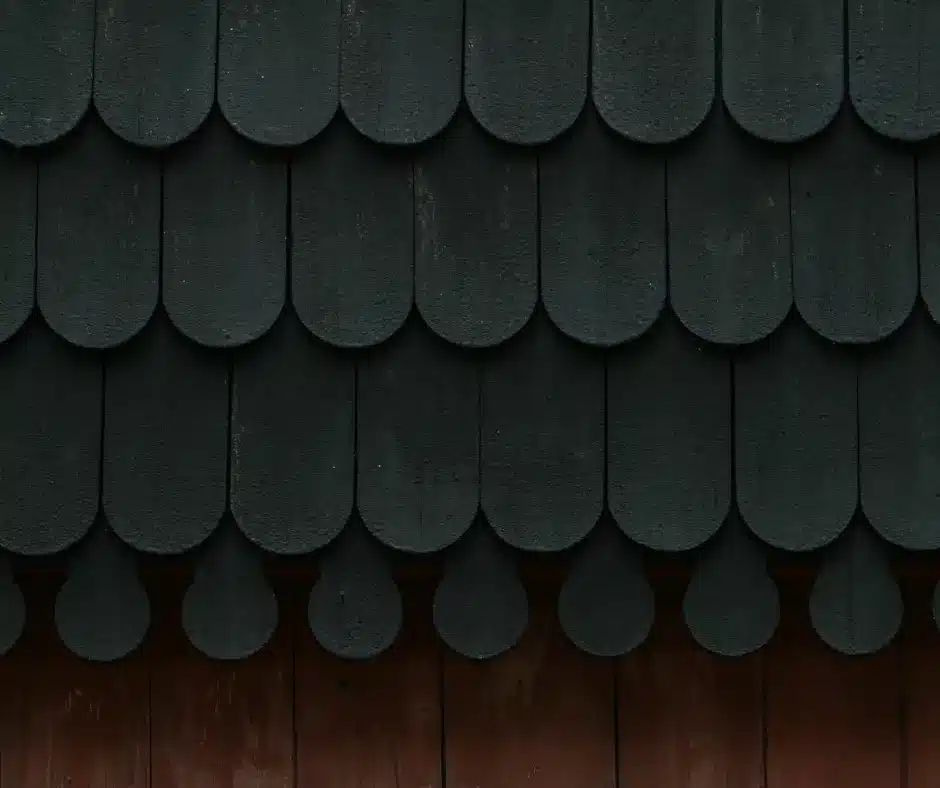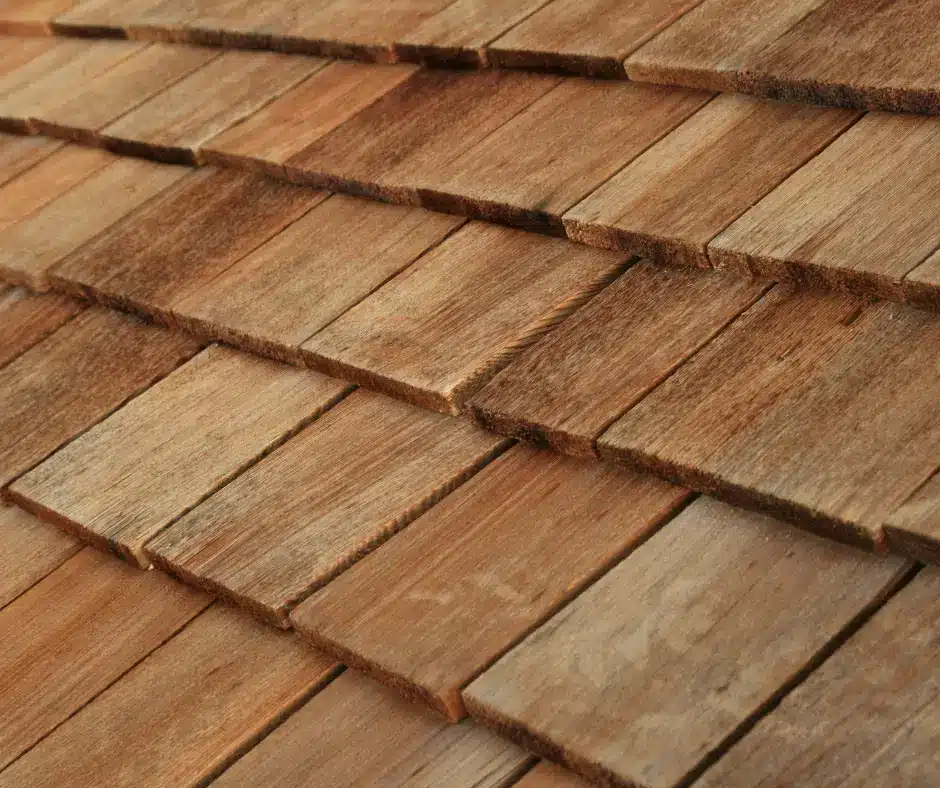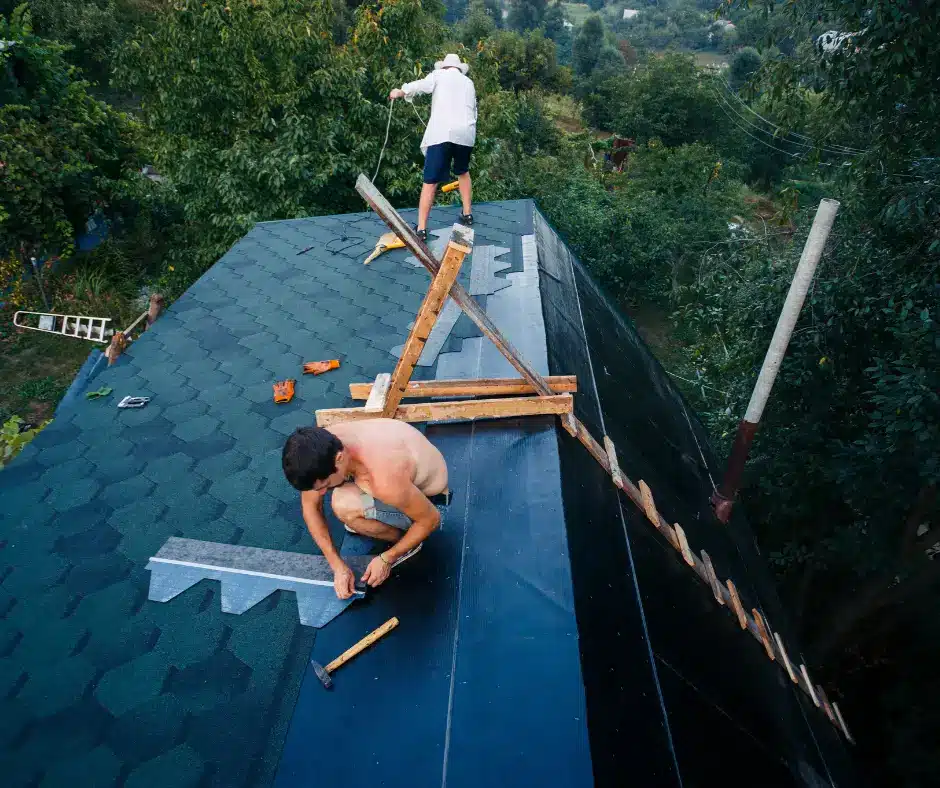Everything You Need To Know About Roof Shingles

You’ve noticed some missing or cracked roof shingles. Before calling a roofer, arm yourself with knowledge about one of your home’s most important components.
This article will provide you with everything you need to know about roof shingles. We’ll explore the different types of shingles, from asphalt to metal and synthetic options.
You’ll learn how long shingles typically last, factors impacting their durability, and signs that it’s time to replace them. With key considerations like climate, budget, and aesthetic preferences in mind, we’ll help you select the right shingle for your home.
You’ll also gain insight into the roofing process so you can be an informed consumer when hiring the best Winnipeg Roofing contractor.
Don’t make this big decision blindly. Keep reading to become a shingle expert.
What Are Roof Shingles?
Roof shingles are overlapping tiles made of materials such as asphalt, wood, slate, metal, concrete, or composite materials that are installed on rooftops to prevent weather damage.
Asphalt or fiberglass shingles are the most common and affordable option for residential homes. According to industry experts, asphalt shingles can last up to 50 years and are fire resistant.
Asphalt Roof Shingles
Asphalt shingles are made from a fiberglass mat embedded in asphalt and covered with a protective coating. They are inexpensive, durable, and available in a variety of styles that mimic the look of wood or slate.
Asphalt shingles have a lifespan of 15 to 50 years, depending on the quality. Higher-quality shingles, known as architectural or dimensional shingles, have a textured, layered look and typically last 30-50 years.
Installation
The installation of asphalt shingles typically takes 2 to 3 days for an average-sized roof. Shingles are applied in overlapping rows, with each shingle covering the edge of the shingle below for protection from the elements.
Proper installation according to the manufacturer’s instructions is key to maximizing the lifespan of your shingles.
It’s best to hire a reputable, certified roofing contractor like All Weather Exteriors to install your asphalt shingles. They have the experience, proper equipment, and access to high-quality materials to do the job right.
In summary, asphalt shingles are an affordable, attractive, and long-lasting option for residential roofing. With proper installation and maintenance, asphalt shingles can protect your home for decades to come.
For homeowners in Manitoba, asphalt shingles are a tried-and-true choice that stands up well to our extreme weather conditions.

Why Roof Shingles Are Important?
Roof shingles are one of the most important components of any roofing system. According to studies, shingles make up nearly 80% of residential roofs in North America.
The primary purpose of roof shingles is to protect your home from the elements like rain, snow, and wind.
Quality shingles, properly installed, form a durable, waterproof seal over your roof deck and attic. This helps prevent leaks that can lead to costly damage.
Curb Appeal
Roof shingles also significantly impact your home’s curb appeal and resale value. An old, damaged roof with curling or missing shingles gives the impression of a poorly maintained home.
Replacing your roof with high-quality, architecturally appropriate shingles can greatly improve your home’s appearance and make it more attractive to potential buyers.
Energy Efficiency
The right roof shingles can help lower your energy bills. Shingles with reflective granules are more energy efficient because they reduce heat absorption in the summer.
Upgrading to newer, properly ventilated attic shingles, you can make your HVAC system more efficient by up to 20%, according to studies from the U.S. Department of Energy.
Longevity
High-quality asphalt or composite shingles typically last 20-50 years, depending on the product and installation. Slate or metal shingles can last 50-100 years.
While a new roof is a major investment, choosing durable, long-lasting shingles means you won’t have to replace them as often, which saves you money and hassle in the long run.
In summary, roof shingles are a critical component of your home that provide essential protection, improve appearance, increase efficiency, and extend the life of your roof.
When it’s time for a new roof, invest in high-quality, durable shingles and have them installed properly by a reputable Winnipeg roofing company like All Weather Exteriors. Your home—and your wallet—will thank you for it.
Types of Roof Shingles Used in Winnipeg
Asphalt Shingles
Asphalt shingles are the most popular and affordable roofing material in Winnipeg. Made from fiberglass mats coated in asphalt and mineral granules, asphalt shingles offer good protection from the elements at a low cost. The average Winnipeg homeowner pays between $3 to $5 per square foot installed for asphalt shingles.
While asphalt shingles require more frequent replacement than other materials, typically lasting 15 to 30 years, they are easy to install and repair which keeps costs down.
Asphalt shingles also come in a variety of colors to suit any home exterior.
For the budget-conscious Winnipeg homeowner looking for a straightforward, short-term roofing solution, asphalt roof shingles are a solid choice.
Metal Roofing
For a long-lasting, low-maintenance roof, metal roofing is an excellent option. Aluminum and steel roofing panels can last 40 to 70 years. Metal roofs are also highly resistant to weather, fire, and pests.
However, metal roofing tends to be more expensive, costing between $5 to $12 per square foot installed.
Metal roofs come in vertical ribbed and corrugated profiles for a sleek industrial look or can be purchased in shingles that resemble more traditional asphalt or cedar shingles.
While metal roofs require little maintenance once installed, they can dent or scratch more easily and the installation process is more complicated which contributes to the higher cost.
For Winnipeg homeowners wanting a permanent roofing solution, the long-term benefits of metal roofing are worth the investment.
Synthetic Slate and Cedar Shingles
For those wanting the natural look of slate or cedar shingles without the high cost or maintenance, synthetic alternatives made from composite materials are a great choice.
Synthetic slate and cedar shingles contain recycled plastics and wood fibers to create tiles that closely resemble natural slate and cedar but only last around 30 to 50 years and cost between $7 to $10 per square foot installed.
While synthetic shingles offer natural aesthetics at a lower cost, they are difficult to repair and may not withstand weather as well as natural slate or cedar which typically last 70 to 125 years.
For eco-conscious Winnipeggers wanting the upscale look of slate or cedar at an affordable price, synthetic shingles can be an attractive and sustainable compromise.

Choosing the Best Roof Shingles for Your Winnipeg Home
There are several roof shingle options suitable for the climate in Winnipeg. Asphalt or fiberglass shingles are affordable, fire-resistant, and durable. They come in a variety of styles resembling slate, wood shakes, and tile.
According to the Roofing Contractors Association of Manitoba (RCAMB), asphalt shingles make up over 95% of residential re-roofing jobs in the province.
Asphalt Shingles
Asphalt shingles, also known as composition shingles, are made from organic or fiberglass mats saturated in asphalt and topped with mineral granules. Multiple studies from the National Research Council Canada found that asphalt shingles can last 20-30 years.
Asphalt shingles withstand Winnipeg’s extreme weather, are impact-resistant, and are available at multiple price points. Popular and budget-friendly options include 3-tab shingles and architectural or dimensional shingles which offer a wood-shake appearance.
Premium Shingles
For a premium, long-lasting roof, consider fiber-cement shingles, natural or artificial slate, metal, or cedar shakes. According to the Canadian Home Builders’ Association, fiber-cement and slate shingles last 50 years or more but cost 2-5 times more than asphalt.
Metal shingles, made of steel, aluminum, or copper, also offer 50+ year lifespans and a sleek appearance but tend to dent or scratch more easily. Cedar shakes provide an attractive natural wood aesthetic but requires frequent maintenance and replacement every 10-30 years.
Best Value
For the best value, architectural asphalt shingles offer the ideal balance of performance, longevity, and style for most Winnipeg homeowners. Brands like IKO Cambridge, GAF Timberline HDZ, and CertainTeed Landmark are excellent options, with prices ranging from $80 to $150 per 100 sq. ft.
These shingles replicate the dimensional look of wood or slate, resist algae and fungal growth, and typically carry 30-year warranties. With proper installation by a certified contractor like All Weather Exteriors, architectural shingles can provide decades of protection for your biggest investment.
In summary, while various long-lasting roof shingle options exist, asphalt architectural shingles are an affordable, low-maintenance solution well-suited to handle Winnipeg’s climate. With a little research into brands, styles, and costs, you can find roof shingles to complement your home for years to come.
You now know how to make an informed decision when it comes to your roof shingles.
With options ranging from asphalt to metal roof shingles, weigh the pros and cons of each based on climate, budget, and aesthetic.
Consult local regulations, analyze product warranties, and inspect your roof annually. An ounce of prevention saves a pound of repairs. Your roof protects your most valuable asset, so choose your shingles wisely. With proper installation and care, they will guard your home for decades.
For residents of Winnipeg, quality shingles bring peace of mind through harsh winters and raging storms. You owe it to yourself and your family to make sure your roof is covered in the best possible way.

Weather the storm with confidence. Choose All Weather Exteriors for your Winnipeg roof.
Winnipeg’s temperamental climate demands a roof you can trust. All Weather Exteriors, Winnipeg’s leading roofing experts, specialize in shingle installation for all roof types.
Our certified technicians will ensure your home is protected from harsh winds, pounding rain, and even flying snowbanks. We offer a variety of top-quality shingle options and back them with unmatched warranties for peace of mind.
Get a free quote today and discover why All Weather Exteriors is the clear choice for keeping your Winnipeg home safe and dry.
Editor’s Note: This post was originally published on June 1, 2019. The last update was made on May 17, 2024, to reflect new information and insights.
Leave a Reply
You must be logged in to post a comment.

26 Comments
Hello! I realize this is kind of off-topic however I needed to ask.
Does building a well-established website such as yours require a
massive amount work? I’m completely new
to writing a blog however I do write in my
diary every day. I’d like to start a blog so I will be able to
share my personal experience and views online.
Please let me know if you have any recommendations
or tips for brand new aspiring bloggers. Thankyou!
Its not my first time to pay a visit this website, i am visiting this web site dailly and
get nice facts from here every day.
Hello there! I could have sworn I’ve been to this website before but after
looking at some of the articles I realized it’s new to
me. Regardless, I’m certainly delighted I found it and I’ll be
bookmarking it and checking back regularly!
Way cool! Some very valid points! I appreciate you writing this post plus the rest
of the site is really good.
Its like you read my mind! You appear to know
so much about this, like you wrote the book in it or something.
I think that you can do with a few pics
to drive the message home a little bit, but instead of that, this is great blog.
A great read. I will definitely be back.
My partner and I stumbled over here different page and thought I might as well check things out.
I like what I see so now i’m following you. Look forward to looking into your web page again.
Pretty section of content. I just stumbled upon your weblog and in accession capital to assert that I get in fact enjoyed account
your blog posts. Anyway I’ll be subscribing to your augment and even I
achievement you access consistently fast.
bookmarked!!, I love your web site!
I really liked this pos i actually read your blog pretty often,
and you’re consistently coming out with a
lot off greaat stuff. I contibuted this on my blog,
and mmy followers loved it. Keep up the grdeat work 🙂
Hi there! This article could not be written much better!
Reading through this post reminds me of my previous roommate!
He continually kept preaching about this. I will send this post to him.
Fairly certain he’ll have a very good read. Many thanks for sharing!
This post was amazing i read your blog fairly often, and you’re consistently coming
out with a lot of great stuff. I shared this on my
facebook, and my followers really liked it.
Keep up the good work 🙂
I loved this post! i try to read your blog fairly
often, and you’re constantly coming out with
some great stuff. I embedded this on my facebook, and my followers adored it.
Continue the great work 🙂
Great post. I was checking constantly this weblog
and I’m impressed! Extremely useful info particularly
the closing phase 🙂 I handle such info much. I used to be looking for this particular
information for a long time. Thanks and good luck.
I like the helpful information you provide in your articles.
I will bookmark your blog and check again here regularly.
I’m quite certain I’ll learn plenty of new stuff right here!
Good luck for the next!
I really liked this post i actually read your blog fairly often, and you’re always coming
out with some great stuff. I shared this on my fb, and my followers loved it.
I really admire the good work 🙂
Wow, marvelous weblog format! How lengthy
have you ever been running a blog for? you make running a blog glance
easy. The whole look of your site is wonderful, as well as the content!
Hey There. I found your blog using msn. This is a really
well written article. I will make sure to bookmark it and come back to read more
of your useful information. Thanks for the post. I
will definitely return.
I?m not that much of a internet reader to be honest
but your blogs really nice, keep it up! I’ll go ahead and bookmark
your website to come back down the road. Cheers
Some genuinely wonderful work on behalf of the owner of this site,
perfectly outstanding subject matter.
Woah! I’m really loving the template/theme of
this website. It’s simple, yet effective.
A lot of times it’s very hard to get that “perfect balance”
between user friendliness and visual appeal. I must
say you have done a fantastic job with this.
Additionally, the blog loads super quick for me on Safari.
Outstanding Blog!
Heya i’m for the first time here. I came across this board and I find It
truly helpful & it helped me out much. I’m hoping to offer one
thing again and help others such as you aided me.
I’m truly enjoying the design and layout of your website.
It’s a very easy on the eyes which makes it much more enjoyable for me to come here and visit more often.
Did you hire out a developer to create your theme? Fantastic work!
Hi! You can try contacting http://www.topshelfseo.ca
Thanks for finally writing about > The lifecycle of a shingle roof | All Weather Exteriors < Liked it!
We’re a group of volunteers and opening a new scheme in our community.
Your site provided us with valuable info to work on. You have
done an impressive job and our entire community will be thankful to you.